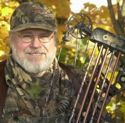Drive through Central Kentucky backroads and you might get to witness the aerial artistry of the American kestrel (Falco sparverius).
These diminutive falcons can often be seen perched on a roadside telephone pole or wire, but what makes them so easy to spot is their signature move — hovering in mid air by rapidly beating their wings, then diving down on prey with outstretched talons.
Distribution
The American kestrel is the most abundant falcon in North America. Its breeding range is vast, extending from Alaska, across northern Canada to Nova Scotia, southward through the Lower 48 states into central Mexico and the Caribbean. There are also local breeding populations in Central America, and throughout most of South America.
In all there are 17 subspecies of the American kestrel, generally based on plumage, size, and vocalizations.
In Kentucky, the American kestrel is found in rural farmlands statewide, with much lower numbers in the densely forested Cumberland Plateau. The preferred habitat is open land — pastures, crop fields, grasslands, utility corridors, even city parks and golf courses.
American kestrels that nest in Kentucky do not migrate, but local populations swell during the winter months as northern migrants arrive.

In contrast to many other raptor species, the sexes differ more in plumage than in size. Males have more colorful plumage than females (Photo Provided)
It’s likely that the American kestrel has increased in numbers and distribution in Kentucky since the 18th century, due to the clearing of forests for agriculture.
That being said, American kestrel populations have declined across the region in recent decades. In 2010, the Kentucky Department of Fish and Wildlife Resources (KDFWR) classified the American kestrel as a species of greatest conservation need in its State Wildlife Action Plan.
Increased competition for nest sites with invasive species (European Starlings), lower numbers of suitable nest sites, and contaminants in prey species, are thought to be factors in their decline, not only in Kentucky, but surrounding states.
Description
The American kestrel is America’s smallest falcon. Adults are about 7 to 9 inches tall, with a wingspan of about 20 inches, and a five-inch tail. Females are slightly larger than males.
They are ambush hunters, and despite their small size, have strong talons and beaks, to swiftly dispatch prey. They usually dive from a perch, but occasionally, the American Kestrel will catch its prey on the wing, like the Peregrine Falcon (Falco peregrinus), Kentucky’s other native falcon species.
In contrast to many other raptor species, the sexes differ more in plumage than in size. Males have more colorful plumage than females. Both sexes have two distinct black stripes on each side of their face.
Males have blue-grey wings with black spots and white undersides with black barring. Their backs are rufous (brownish-red), and they have blue shoulders and a blue crown.
The female’s back and wings are rufous with dark brown barring. The undersides of the females are creamy to buff with heavy brown streaking. The female’s tail is noticeably different from the male, being rufous in color with numerous narrow dark black bars.
The American kestrel preys on small mammals (mostly mice and voles, but sometimes bats), small birds, and larger insects, particularly grasshoppers, but also beetles, dragonflies, and moths. Occasionally small snakes, lizards and frogs are also taken.
For more outdoors news and information, see Art Lander’s Outdoors on KyForward.
The widely-used common name sparrow hawk is based on the fact that the raptor often feeds on sparrows and other small birds. But that’s a misnomer, since the American kestrel is a falcon, not a hawk.
Nesting Habits
American kestrels are cavity nesters.
They generally prefer natural cavities in trees, with closed tops and tight fitting entrances, to provide maximum protection of the eggs and young, but they sometimes nest in holes created by large woodpeckers, on cliff ledges or in crevices in old buildings in urban areas.
They also will nest in manmade wooden boxes, which are often placed in areas with limited natural nest sites. Here’s a link for nest box plans.
Nesting is initiated in late March to April. Pair bonds are strong, often permanent. Pairs may use the same nesting site for years, and typically stay near the nest site year-round.
Females lay three to seven eggs. They are white to pale brown, usually spotted with brown and gray.
Incubation is by both parents (mostly the female), and usually lasts about 30 days. Young grow fast and fledge by the end of June. The parent birds continue to feed their young up to 12 days after fledging. Later, these juveniles may gather in groups with young from other nests. American Kestrels are sexually mature by their first spring.
Their lifespan is relatively short, just three to five years.
The American kestrel is a beautiful little falcon with aerial agility unlike any other raptor in Kentucky.
Art Lander Jr. is outdoors editor for NKyTribune and KyForward. He is a native Kentuckian, a graduate of Western Kentucky University and a life-long hunter, angler, gardener and nature enthusiast. He has worked as a newspaper columnist, magazine journalist and author and is a former staff writer for Kentucky Afield Magazine, editor of the annual Kentucky Hunting & Trapping Guide and Kentucky Spring Hunting Guide, and co-writer of the Kentucky Afield Outdoors newspaper column.























